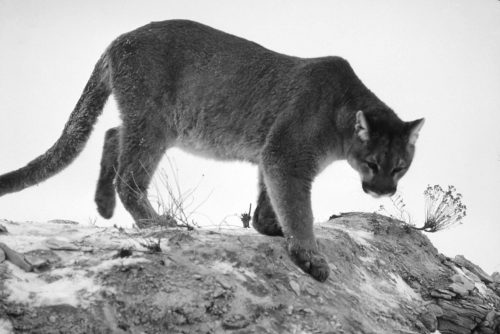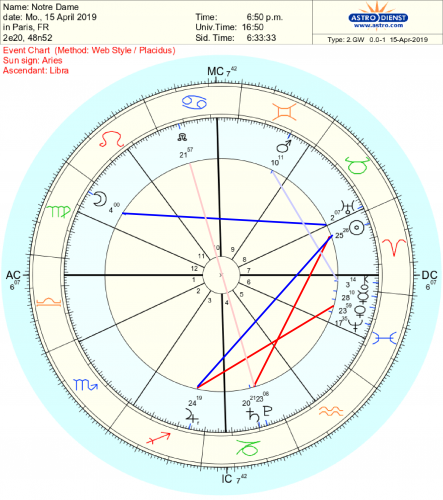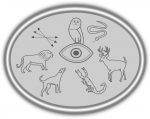
This excerpt, about meeting a cougar on a vision quest, is from Divining with Animal Guides: Answers from the world at hand.
I decided I would do a vision quest. I would go out on my own, build a fire, and instead of sleeping I would stay up all night and have visions.
I chose the dark moon for my journey. I walked a few miles along a deserted beach, with cliffs along the edge that had small caves and alcoves. When I reached a sheltered place I pulled firewood out of my backpack, gathered kindling along the beach, built a small fire, and in the approaching twilight commenced scrying into the flames. I didn’t have any visions.
I sat there a long time, getting up only to add more fuel. It began spitting rain and I became chilled even with the fire. I felt silly, shivering all by myself in a deserted place with a car less
than five miles away and a warm bed within a few hours’ drive. “This is boring,” I said to myself. I gathered my belongings and scattered the fire. As I stamped out the last embers, I had a vision.
A fat Chinese Buddha appeared, so rotund that I could not discern the outline of his body within my psychic frame of reference. I intuitively understood that he appeared to me thus to
show that he was bigger than I could envision. The limits of his influence were beyond the scope of my understanding.
The Buddha raised his hand in a gesture of protection and the apparition dissolved. I commenced my journey home.
As I trekked northward, the cliffs at my right and the ocean to my left, I discovered it was not raining at all; the fine droplets were from an unusually rough tide. How had I blotted out the sound of that surf? I realized that I was now in danger of being cut off from dry land; cliffs to one side of me with water butting up against them. Though it was very dark, I put my flashlight in my backpack because I needed both hands to scramble over the slippery rocks. I felt angry with myself for having bumbled into such a dangerous situation.
Finally the cliffs ended and the beach opened up. I had made it. I unloaded my backpack and retrieved my flashlight.
I was now only two miles from the car, two rather slow miles over sand or a short brisk walk via a trail close by. The logical option was to take the trail, but I felt an unexplained reluctance. It was one of those feelings that don’t make sense at the time, but you understand later. I was sopping wet from struggling with the surf, and I was rattled, so despite my misgivings, the trail won out.
I practically ran along the narrow path, so I was very close before I saw her. She was huge, the largest carnivorous beast I had confronted in the wild. She appeared confused. She moved a few steps from the beam of my flashlight and stood there, staring at me.
“You’re supposed to run away,” I said helpfully. The conventional wisdom was that cougars would not attack humans unless cornered, though they might possibly eat children. Many well- publicized deaths from unprovoked mountain lions have occurred since, but this was the prevailing belief at the time. I was not reassured by this while standing face-to-face with my cougar, however, because I am not a large woman. I thought to myself, “I hope this cougar understands that I’m a grown-up and not a child.”
“Listen, you’re blocking the path,” I reasoned. “Turn and follow this other path, or run back the way you came. I have to go in this direction because my car is there.”
The mountain lion took a few steps forward, slightly left of my shoulder.
“Okay, I give you the path,” I said quickly. “I’ll go another way.” I took a small step backward and shone my flashlight directly in the animal’s eyes. I took another slow step backward, and another, and another. I began shining the flashlight away, then back in her eyes, then away, then back, rationalizing this would interfere with her ability to focus. She remained still.
As I finally turned away, I let out the loudest, most terrifying scream I could muster, just to give her second thoughts about following me. “Take that, you big scream machine,” I thought.
My relationship with wilderness changed that night. After my third cougar encounter I still went out by myself, sometimes after dark, but I interacted with my environment in a different way. Hearing an unfamiliar sound I would investigate not only out of curiosity, but also out of concern for safety. I remained vigilant; I became cautious. Magical protection was no longer an abstract concept. Once there was a girl who roamed the wilderness alone at night, aware that there were mountain lions in the woods and completely unafraid. I am no longer that girl.




